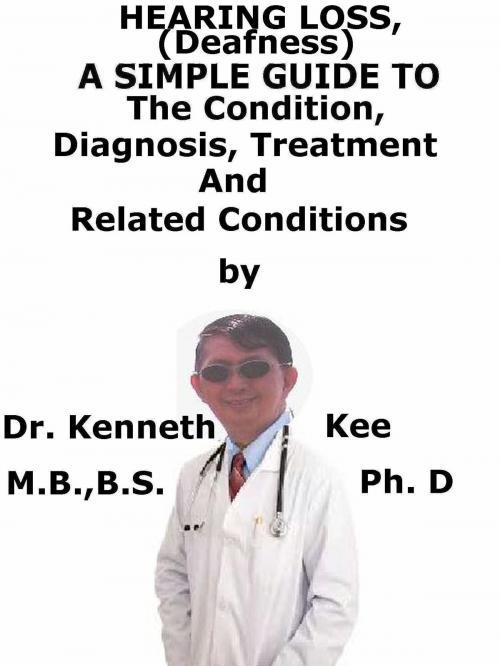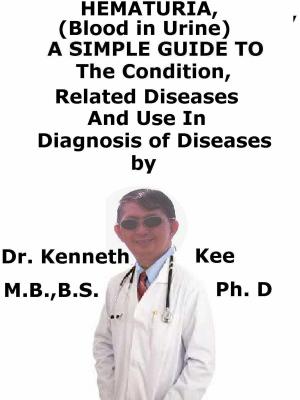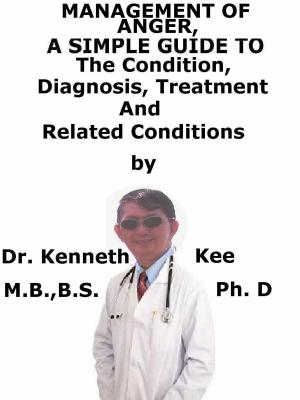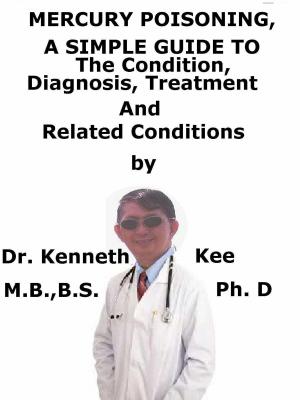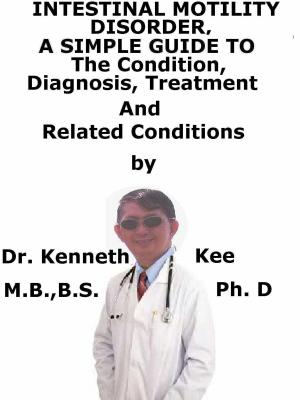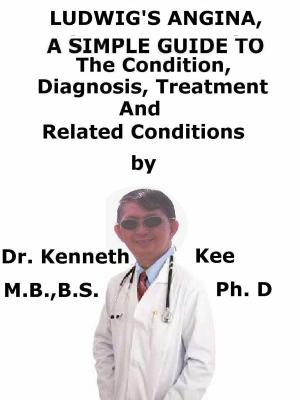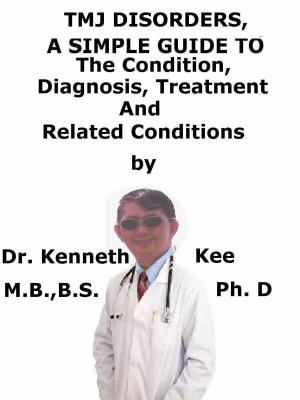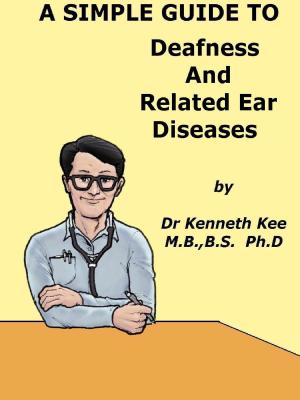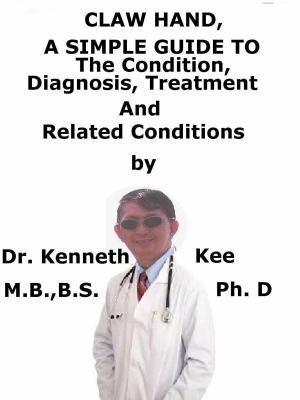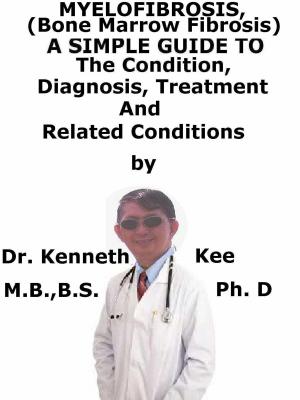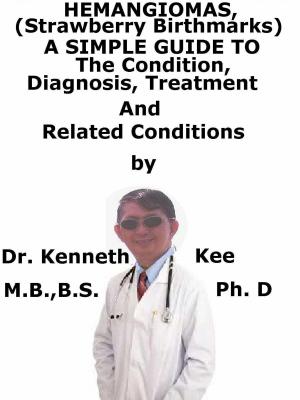Hearing Loss (Deafness), A Simple Guide To The Condition, Diagnosis, Treatment And Related Conditions
Nonfiction, Health & Well Being, Medical, Specialties, Otorhinolaryngology| Author: | Kenneth Kee | ISBN: | 9781370756254 |
| Publisher: | Kenneth Kee | Publication: | December 22, 2016 |
| Imprint: | Smashwords Edition | Language: | English |
| Author: | Kenneth Kee |
| ISBN: | 9781370756254 |
| Publisher: | Kenneth Kee |
| Publication: | December 22, 2016 |
| Imprint: | Smashwords Edition |
| Language: | English |
Hearing Loss (Deafness) is a medical disorder that consists of partial or complete loss of hearing, also known as hearing impairment.
The normal lower minimum of the hearing range is 0-20 decibels (dB), where 0 dB is the threshold for the discernment of sound at a given frequency for people with normal hearing.
Normal dB levels are around 30 dB for a whisper, 50 dB for average home noises and 60 dB for conversational speech.
The hearing pain threshold is at about 140 dB (which is about the sound of a jet engine).
Hearing loss is calculated in decibels hearing loss (dB HL).
1. 20-40 dB HL: mild, cannot hear whispers.
2. 41-70 dB HL: moderate, cannot hear conversational speech.
3. 71-95 dB HL: severe, cannot hear shouting.
4. >95 dB HL: profound, cannot hear sounds that would be painful to listen to for a hearing person.
There are two forms of deafness:
A. Conductive hearing loss - this occurs when there is a problem in the transmission of sound waves from the external ear, through the middle ear.
The disease processes can happen at any level along this part of the ear.
1. The external ear canal
a. Obstruction caused by wax
b. Blockage caused by foreign body
c. Obstruction caused by infection (otitis externa)
d. Blockage caused by ear polyps
2. Eardrum
a. Perforation caused by trauma
b. Perforation caused by infection
c. Scarred eardrum from injury or infection
3. Middle ear bones
a. Dislocation of the bones from injury or infection
b. Damage to the bones from injury or infection
c. Fixed bones or osteosclerosis (hardening of the bones from aging)
4. Middle ear infection
Infection of the middle ear happens with fluid in the middle ear cavity stopping sound from passing through
The causes of conductive hearing loss can often be prevented and treated.
B. Sensorineural hearing loss - this indicates problems occurring in the cochlea (the most frequent site of disease), cochlear nerve or brain stem, leading to abnormal or absent neurosensory impulses.
Sensorineural problems are more frequent in adults.
1. Acoustic neuroma
2. Age-related hearing loss
3. Childhood infections, such as meningitis, mumps, scarlet fever, and measles
4. Meniere's Disease
5. Regular exposure to loud noises (such as from work or recreation)
6. Usage of certain medicines
There may be:
a. Damage to hearing organ or cochlea which transmit nerve impulse to the hearing nerve and on to the brain
b. Injury to the hearing nerve (auditory nerve) from loud sounds, infection or injury
Diagnosis
The whispered voice test and tuning fork tests (Weber's and Rinne's tests) can be carried out simply and effectively.
Hearing test (audiogram) can confirm the presence and severity and type of hearing loss
Treatment
1. Remove foreign body or wax
2. Eardrum perforation restoration
3. Using tubes in the eardrums to remove fluid
4. Repair of the small bones in the middle ear (ossiculoplasty)
Hearing aids and cochlear implants
Learning sign language
TABLE OF CONTENT
Introduction
Chapter 1 Hearing Loss (Deafness)
Chapter 2 Cause
Chapter 3 Symptoms
Chapter 4 Diagnosis
Chapter 5 Treatment
Chapter 6 Prognosis
Chapter 7 Ear Wax
Chapter 8 Perforated Eardrum
Epilogue
Hearing Loss (Deafness) is a medical disorder that consists of partial or complete loss of hearing, also known as hearing impairment.
The normal lower minimum of the hearing range is 0-20 decibels (dB), where 0 dB is the threshold for the discernment of sound at a given frequency for people with normal hearing.
Normal dB levels are around 30 dB for a whisper, 50 dB for average home noises and 60 dB for conversational speech.
The hearing pain threshold is at about 140 dB (which is about the sound of a jet engine).
Hearing loss is calculated in decibels hearing loss (dB HL).
1. 20-40 dB HL: mild, cannot hear whispers.
2. 41-70 dB HL: moderate, cannot hear conversational speech.
3. 71-95 dB HL: severe, cannot hear shouting.
4. >95 dB HL: profound, cannot hear sounds that would be painful to listen to for a hearing person.
There are two forms of deafness:
A. Conductive hearing loss - this occurs when there is a problem in the transmission of sound waves from the external ear, through the middle ear.
The disease processes can happen at any level along this part of the ear.
1. The external ear canal
a. Obstruction caused by wax
b. Blockage caused by foreign body
c. Obstruction caused by infection (otitis externa)
d. Blockage caused by ear polyps
2. Eardrum
a. Perforation caused by trauma
b. Perforation caused by infection
c. Scarred eardrum from injury or infection
3. Middle ear bones
a. Dislocation of the bones from injury or infection
b. Damage to the bones from injury or infection
c. Fixed bones or osteosclerosis (hardening of the bones from aging)
4. Middle ear infection
Infection of the middle ear happens with fluid in the middle ear cavity stopping sound from passing through
The causes of conductive hearing loss can often be prevented and treated.
B. Sensorineural hearing loss - this indicates problems occurring in the cochlea (the most frequent site of disease), cochlear nerve or brain stem, leading to abnormal or absent neurosensory impulses.
Sensorineural problems are more frequent in adults.
1. Acoustic neuroma
2. Age-related hearing loss
3. Childhood infections, such as meningitis, mumps, scarlet fever, and measles
4. Meniere's Disease
5. Regular exposure to loud noises (such as from work or recreation)
6. Usage of certain medicines
There may be:
a. Damage to hearing organ or cochlea which transmit nerve impulse to the hearing nerve and on to the brain
b. Injury to the hearing nerve (auditory nerve) from loud sounds, infection or injury
Diagnosis
The whispered voice test and tuning fork tests (Weber's and Rinne's tests) can be carried out simply and effectively.
Hearing test (audiogram) can confirm the presence and severity and type of hearing loss
Treatment
1. Remove foreign body or wax
2. Eardrum perforation restoration
3. Using tubes in the eardrums to remove fluid
4. Repair of the small bones in the middle ear (ossiculoplasty)
Hearing aids and cochlear implants
Learning sign language
TABLE OF CONTENT
Introduction
Chapter 1 Hearing Loss (Deafness)
Chapter 2 Cause
Chapter 3 Symptoms
Chapter 4 Diagnosis
Chapter 5 Treatment
Chapter 6 Prognosis
Chapter 7 Ear Wax
Chapter 8 Perforated Eardrum
Epilogue
